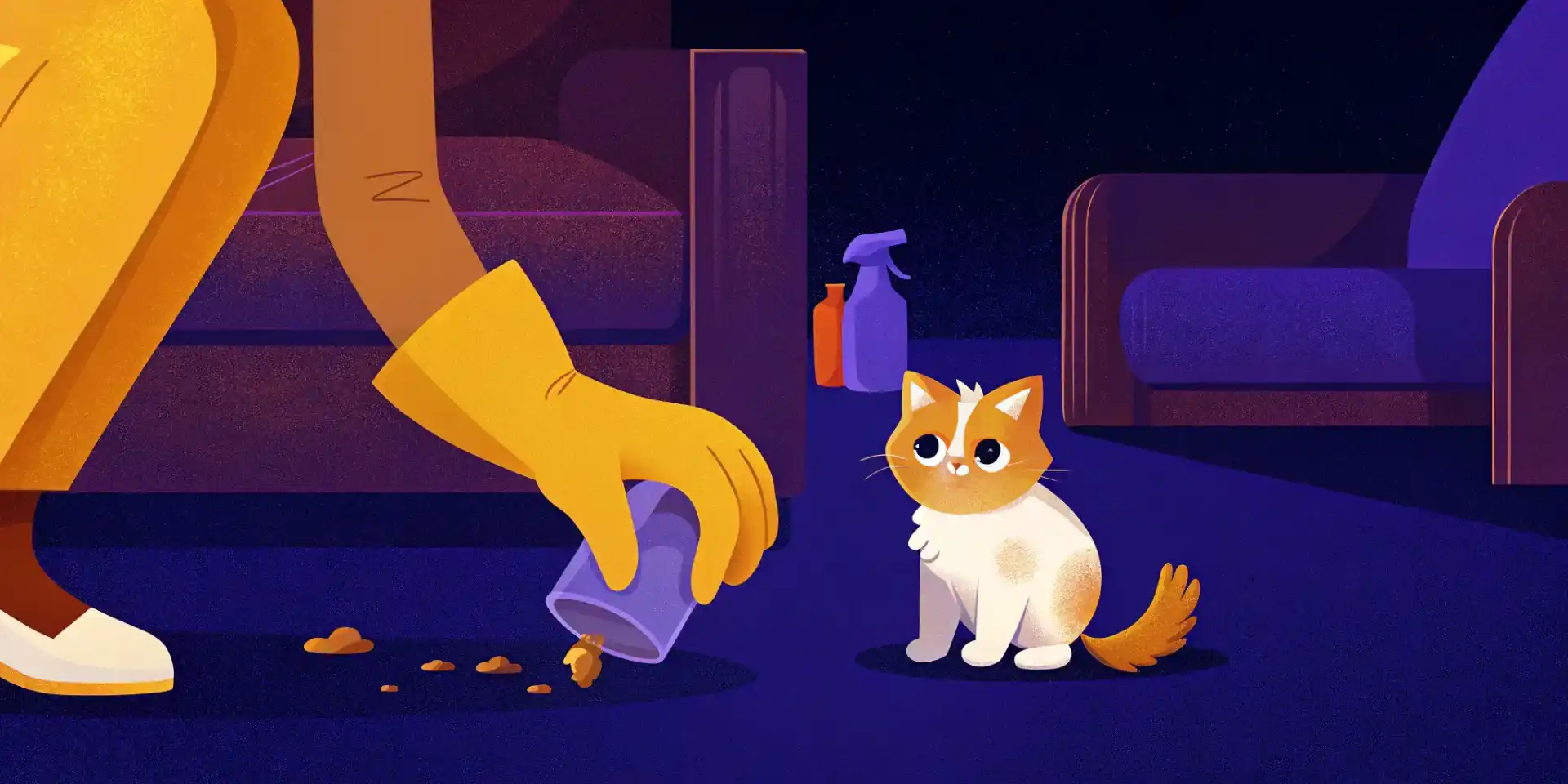
Kitten Litter Box Training: Easy Steps to Success!
New kitten? Nail litter box training fast! Vet tech tips for a clean home & happy kitty. Avoid accidents, learn easy steps now! #kitten #litterbox
Litter Box Training Success: Tips for a Clean and Happy Kitten
Bringing a new kitten home is an incredibly exciting time! But along with the cuddles and playful antics comes the responsibility of litter box training. Don’t worry, most kittens take to it like ducks to water, but a little guidance can make the process smooth and stress-free for both of you. As a veterinary technician with over a decade of experience, I’ve seen my fair share of litter box triumphs (and the occasional mishap!). I’m here to share my top tips for litter box training success and help you ensure a clean and happy kitten – and a clean and happy home.
Choosing the Right Litter Box: Size, Shape, and Location Matter
The first step toward litter box bliss is selecting the right equipment. Think about it from your kitten’s perspective. Would you want to use a tiny, cramped, and publicly located restroom? Probably not!
- Size: Kittens need a box they can easily get into and turn around in comfortably. A box that’s roughly 1.5 times the length of your kitten is a good starting point. Too small and they might end up making a mess outside the box.
- Shape: Covered litter boxes can provide privacy, but some kittens are intimidated by them, especially when they’re first learning. Open boxes are generally a safer bet initially. In my experience, kittens adapt easier to open boxes. Later on, you can always try a covered box if you prefer, but make sure it’s easy for them to enter and exit.
- Location: This is crucial! Choose a quiet, easily accessible location away from food and water. Avoid high-traffic areas where your kitten might feel startled or exposed. A spare bathroom, laundry room, or even a quiet corner in a living room can work well. Place multiple litter boxes, especially in multi-level homes or if you have a larger home. Pro tip: If your kitten has accidents in a specific area, consider placing a litter box there.
 A curious kitten cautiously investigates a brand-new, clean litter box in a well-lit room.
A curious kitten cautiously investigates a brand-new, clean litter box in a well-lit room.
Selecting the Right Litter: A Matter of Preference
The type of litter you choose can significantly impact your kitten’s willingness to use the box. There’s a vast array of options available, from clay litter to clumping litter, crystal litter, and even natural alternatives like wood pellets or paper-based litter.
- Clumping vs. Non-Clumping: Clumping litter is popular for its ease of cleaning. It forms solid clumps when wet, making it easy to scoop out waste. However, some kittens (and cats) are sensitive to the dust or perfumes in some clumping litters. If you have concerns, consider a dust-free or unscented option.
- Scented vs. Unscented: While scented litter might seem appealing to you, many cats find the artificial fragrances off-putting. I believe that unscented litter is almost always the best choice. Let the litter itself do the work of absorbing odors.
- Texture: Some kittens prefer the feel of certain textures. Experiment to see what your kitten likes best. If you’re unsure, start with a plain, unscented clumping litter. If you’re switching litters, do so gradually by mixing the old litter with the new litter to avoid confusing or upsetting your kitten.
The Training Process: Patience and Positive Reinforcement are Key
Now for the main event: getting your kitten comfortable using the litter box. The key here is patience and positive reinforcement. Never punish your kitten for accidents. This will only create fear and anxiety, making the problem worse.
- Introducing the Litter Box: After meals and naps, gently place your kitten in the litter box. You can gently scratch their paws in the litter to encourage them to dig and sniff.
- Recognizing the Signs: Watch for signs that your kitten needs to go, such as squatting, scratching, or meowing persistently. If you see these signs, immediately pick them up and place them in the litter box.
- Positive Reinforcement: When your kitten successfully uses the litter box, praise them enthusiastically and offer a small treat. Positive reinforcement is much more effective than punishment.
- Cleaning the Litter Box Regularly: Scoop the litter box at least once a day, and completely change the litter and wash the box every 1-2 weeks (depending on the type of litter and how many cats are using the box). A clean litter box is more appealing to your kitten.
 A delighted kitten receives a tasty treat as a reward for correctly using the litter box.
A delighted kitten receives a tasty treat as a reward for correctly using the litter box.
Dealing with Accidents: Cleaning Up and Preventing Recurrence
Accidents happen, even with the best training. It’s important to clean them up thoroughly to prevent your kitten from returning to the same spot.
- Clean Thoroughly: Use an enzymatic cleaner specifically designed for pet messes. These cleaners break down the odor-causing enzymes, discouraging your kitten from using the same spot again. Avoid using ammonia-based cleaners, as they smell similar to urine and can actually attract your kitten back to the area.
- Identify the Cause: Try to determine why your kitten had an accident. Was the litter box too dirty? Was it in an inaccessible location? Was your kitten stressed or anxious? Addressing the underlying cause can help prevent future accidents. For instance, if your kitten suddenly starts having accidents after a new pet arrives, they might be feeling stressed and marking their territory.
- Re-Train If Necessary: If your kitten continues to have accidents, go back to the basics of litter box training. Confine them to a small area with the litter box and gradually expand their access as they become more reliable.
 A responsible pet owner uses enzymatic cleaner to thoroughly clean a spot where their kitten had an accident.
A responsible pet owner uses enzymatic cleaner to thoroughly clean a spot where their kitten had an accident.
When to Seek Veterinary Advice: Rule Out Medical Issues
Sometimes, litter box problems can be a sign of an underlying medical issue, such as a urinary tract infection (UTI) or bladder stones. If your kitten is straining to urinate, vocalizing in pain when using the litter box, or has blood in their urine, it’s important to consult with your veterinarian immediately. Remember, changes in litter box habits can sometimes indicate a serious health problem. Early diagnosis and treatment can prevent complications and ensure your kitten’s well-being. Seeking professional veterinary advice for sudden changes in litter box habits is always a good idea to rule out any underlying health concerns.
Conclusion: A Little Effort Goes a Long Way
Litter box training doesn’t have to be a daunting task. With a little patience, understanding, and the right approach, you can help your kitten develop good litter box habits that will last a lifetime. Remember, a clean and happy kitten means a clean and happy home! By following these tips, you can create a positive and stress-free litter box experience for both you and your furry friend. Good luck, and enjoy the journey of kitten parenthood!
 A content and healthy kitten utilizes a clean and easily accessible litter box in a welcoming environment.
A content and healthy kitten utilizes a clean and easily accessible litter box in a welcoming environment.


